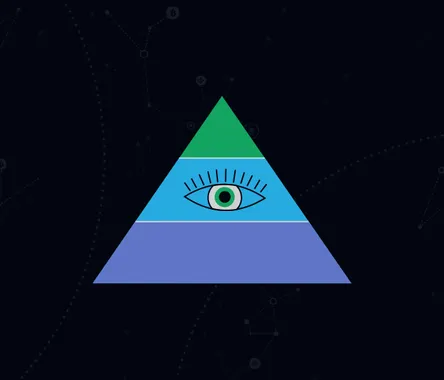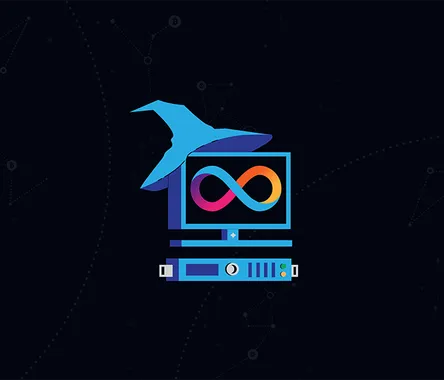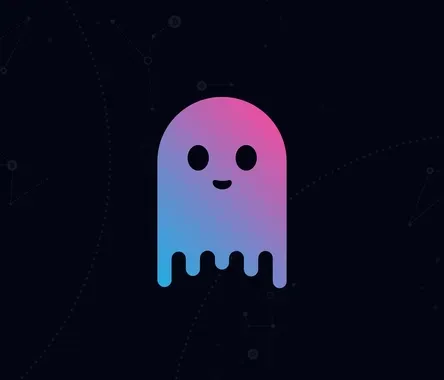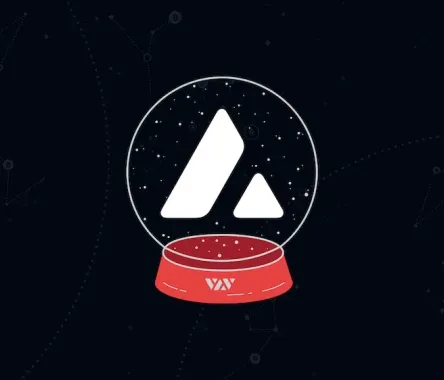What is Cosmos?
Cosmos is an ecosystem of independent and interconnected blockchains connected to each other through an Inter-Blockchain Communication (IBC) protocol. The platform provides developers with the means to build autonomous application-specific blockchains which can interconnect, so that their projects don’t need to exist only as smart contracts on a blockchain. This gives freedom of choice regarding a network’s parameters such as fees, speed, and scale.
Cosmos is being adopted by numerous projects in fields such as DeFi, NFT, DAO, social networks, marketplaces, and many others. The vision of the company is to have apps existing on their own layer not having to compete for the resources of a single network, however still benefiting from being in the same ecosystem.
How does Cosmos work?
Cosmos is built of three layers, the Application layer processes transactions and keeps the state of the network up to date, while the Networking layer provides for communication between transactions occurring on various blockchains, and the Consensus layer is where nodes gather to agree on the state of the system.
The platform keeps the different layers interoperable by relying on a number of open-source tools such as Tendermint, an IBC protocol, and so-called Cosmos Hub and Zones. The team has also developed a software development kit (SDK) and provided it free to use for projects interested in becoming part of the Cosmos ecosystem.
Tendermint is an essential element of the network as its Byzantine Fault Tolerance (BFT) engine which acts as the tool developers can use to build blockchains without having to create them from scratch. This algorithm is run by the Cosmos network to secure it by validating transactions and committing blocks to it.
Tendermint ensures the same transactions are recorded on every machine in the same order. One of the main advantages of the protocol is that it has an Application BlockChain Interface (ABCI) which supports all programming languages, unlike other consensus solutions which come with built-in state machines.
Tendermint is built on the Byzantine Fault Tolerance mechanics and it can tolerate up to ⅓ failures including arbitrary behavior such as hacking or other malicious attacks. Since the protocol doesn’t specify any particular application, such as key-value storage for example, and instead focuses on arbitrary state machine replication, developers using the solution are free to build whatever application logic suits their needs, and can be set up to have different governance support and other customizable parameters.
Part of Tendermint is its PoS governance mechanism keeping in sync the distributed network of machines running the Cosmos Hub. To become a validator on the network, as well as vote on governance parameters and other important changes regarding the future of the protocol, the project requires users to stake ATOM tokens and be part of the top 100 nodes staking ATOM, while voting power is equal to the amount of staked tokens.
Cosmos Hub was not only the first blockchain to be released on the Cosmos network but it was created to act as an intermediary between all other networks created within the Cosmos ecosystem, which are referred to as zones. Each of those can function on its own by authenticating accounts related to it and their transactions while creating and distributing new tokens and updating their protocols when needed.
To be able to facilitate interoperability between all the zones by keeping track of their states, the Cosmos Hub uses a mechanism called the Inter-Blockchain Communication (IBC) protocol. Through it, information can be exchanged securely without limitation between each connected project, which empowers vastly different applications, and networks to interact with each other, exchange data, and even create partnerships depending on the difference in functionality between the projects. IBC allows blockchain interoperability by specifying a set of data structures, abstractions, and semantics that can be implemented by any distributed ledger after meeting a small set of requirements specified in its developer documentation.
How to use Cosmos?
To build a network on the Cosmos ecosystem, the team recommends using the services of a project called Starport, which was designed for building blockchains and launching them on the Cosmos network.
Starport is basically a CLI (Command Line Interface) offering everything needed for building, testing, and launching a blockchain, the protocol is built on top of the Cosmos SDK and also uses Tendermint’s solutions.
To interact with an app Cosmos supports, users can visit this link and find the platform they might need. It is important to make sure to have a wallet Cosmos can integrate with, which can also be found through the network’s website where a list of all projects supporting the blockchain is kept updated.
When creating a blockchain on Cosmos, fee parameters can be chosen by the developers and can be made to depend on various factors such as the size of the fee compared to the amount of gas needed for the transaction to be executed.
Cosmos Staking
To become a node, users are required to temporarily lock up ATOM tokens on the Cosmos Hub through its staking mechanism; this is also required in order to take part in the project’s governance.
When at stake, tokens guarantee the node’s honest intentions, as if any malicious acts are discovered they can be destroyed (slashed) partially or fully. The protocol has a limit of validators that can participate as nodes, currently set at 125. They are ranked depending on the amount of staked tokens they possess, and other users can delegate the rights coming from their staked ATOM in exchange for rewards earned by validators, at a shared risk of slashing.
There are two scenarios when the company could slash validators and the delegators who have allocated their funds to them. The first case, which results in a 0.01% slashing fee occurs when a validator is offline for too long. To determine this, Cosmos has set a requirement for its validators to sign at least 500 of each 10,000 transactions occurring on the network.
The second case, where a 5% slashing fee is applied, occurs if a validator signs two different blocks having the same “height” or as it is called in the crypto world - double-signing. The team states this fault is harder to anticipate and can be the result of bad operation practices or malicious intent from the validator.
To take part in the network’s security by staking ATOM, it is required to stake at least 0.05 ATOM which is said to be enough to ensure users can both stake and pay the transaction fee on Cosmos.
The ATOM token
ATOM is the native token of the Cosmos network and as such has various functionalities. The coin is used when executing smart contracts and completing transactions. Each time a new block of transactions receives confirmation as approved from the network validators new ATOM is minted and distributed among them as means to incentivize their participation as nodes on the network.
Is Cosmos safe?
Cosmos hasn’t had any serious security issues in the past, however, there have been vulnerabilities found in the protocol that has been patched. One such vulnerability was found in the Cosmos SDK in October 2021, according to the team’s vulnerability disclosure policy, the issue was addressed and a statement was made to the community.
The potential bug was flagged as a high-severity security issue impacting Cosmos SDK v0.43.x and v0.44.x, although no user funds were found to be at risk, the network was under the risk of a possible chain halt. This was due to a “non-deterministic behavior in the validating mechanism of the consensus protocol. The whole announcement regarding the issue and the measures undertaken to solve it can be found here.
Earlier in 2019, there was another critical security vulnerability found in the Cosmos SDK that enabled potential malicious parties to bypass certain penalties for misbehaving on the network. As shared by the Cosmos team in a forum post, the bug enabled a validator to bypass the full unstaking period and have their funds immediately become liquid.
The Cosmos platform is operated by the Interchain Foundation (ICF) – a Swiss non-profit foundation formed to support the development of the project and its ecosystem. The foundation accepts applications for grants. Initially, the foundation tasked the Tendermint Inc team with the development of the Cosmos network, however throughout the years numerous teams have worked on the platform, the full list can be found here.
Cosmos was audited by Jepsen in September 2017 and Least Authority in January 2019.
Ecosystem & Partners
Among the 263 apps and services currently taking part in the Cosmos ecosystem are well-known names in the crypto industry such as Binance, Terra, and Polygon.
Terra, a blockchain mainly known for its algorithmic stablecoins, is built with Cosmos SDK and also uses the IBC provided by the project to bring its native LUNA token and Terra stablecoins to the Cosmos ecosystem. Binance also created its Binance Chain by building it with Cosmos’ SDK and supports staking ATOM tokens directly through its exchange platform. Another company, to take advantage of the possibilities provided by the open-source Cosmos SDK is Polygon. The popular blockchain states they also use a forked and modified version of Tendermint called Peppermint which is combined with the Cosmos SDK on the so-called Heimdall layer of the network to achieve consensus. However, due to the combination, some modules from Cosmos’ SDK have been removed by the Polygon team.
What's next?
For 2022, the team behind the platform has planned many new features with a major upgrade planned for each quarter of the year. The major points of work include the development of Interchain Security by the Interchain Foundation and Informal Systems teams. This new security service will allow various Cosmos network blockchains to effectively lease security to each other to provide for newer chains to bootstrap their economies while larger chains can earn revenue for the service.
For Q1 2022 the company is planning to release Interchain Accounts, which will allow ecosystem chains to securely control accounts on other ecosystem chains. The first version of Liquid Staking developed by the core Cosmos contributor and founder of Iqulsion – Zaki Manian, is expected to be released to the public not earlier than February 2022.
The company is also focusing on developing the IBC and growing the Cosmos ecosystem by actively supporting new projects in their development. Works are also progressing on the development of more DeFi projects and providing them with the means to be more efficient
Links
https://cosmos.network/





